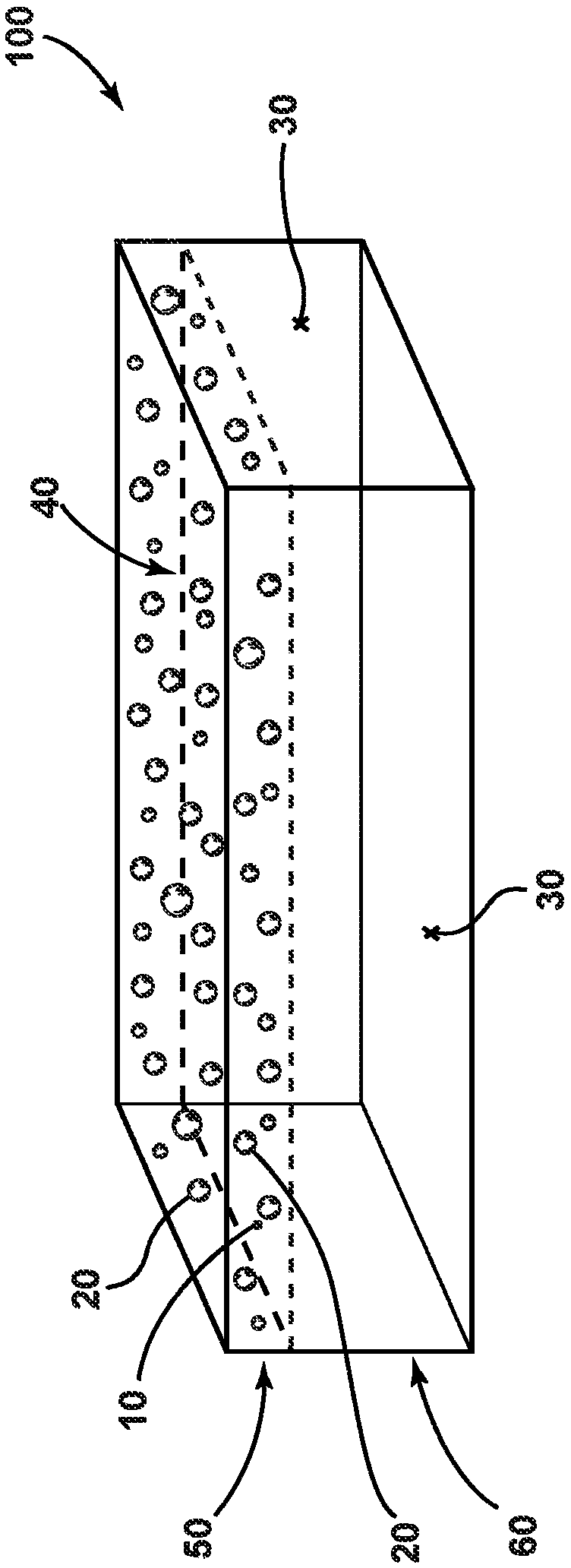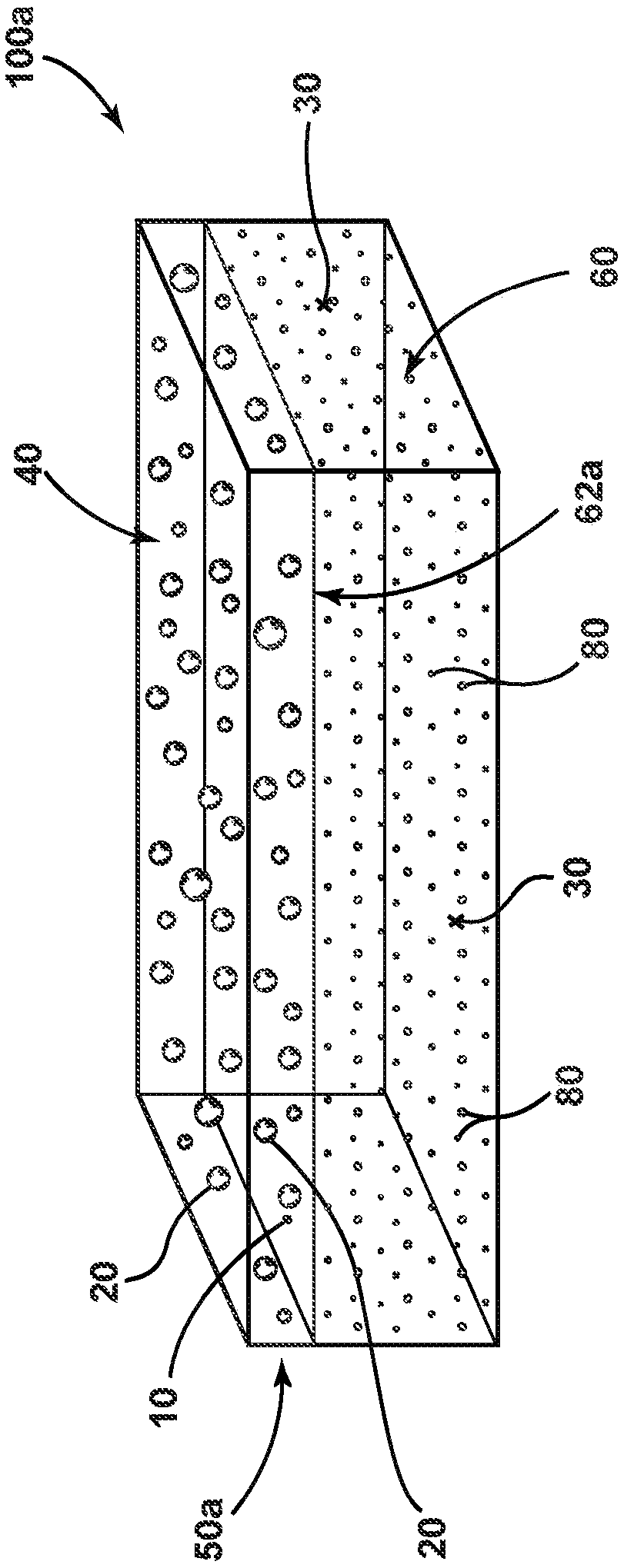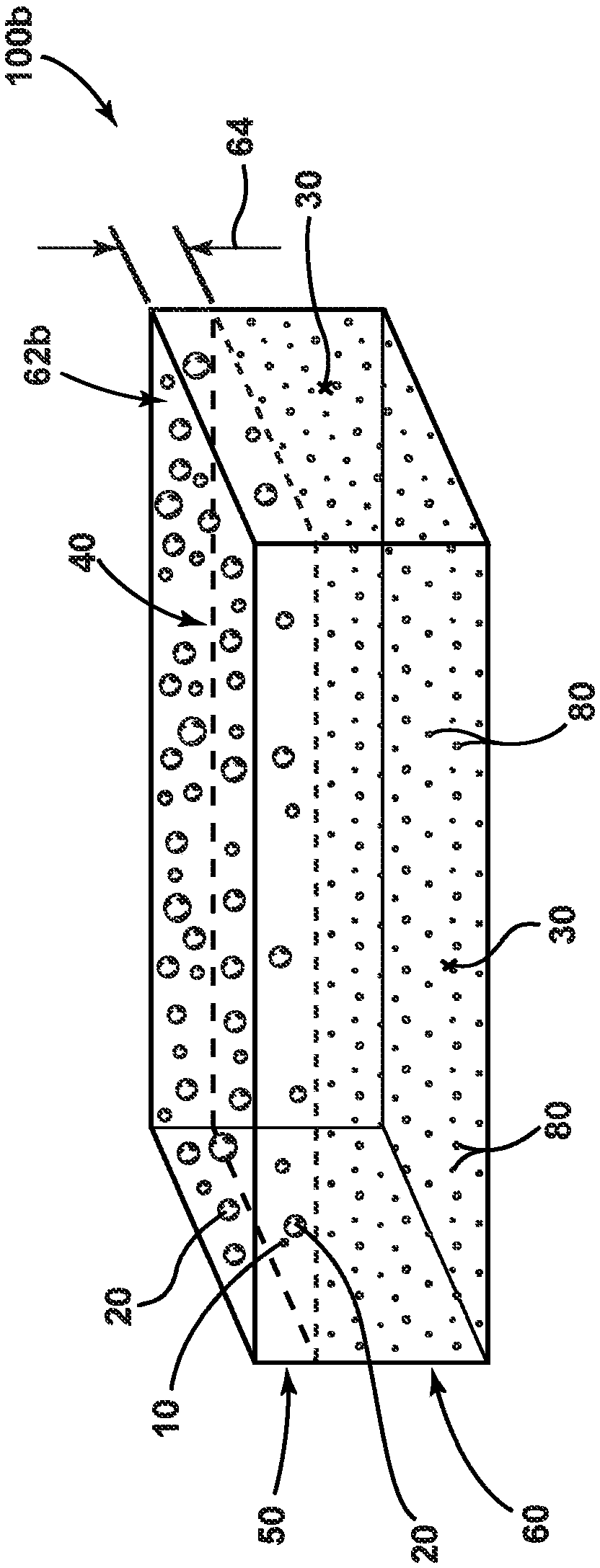Antimicrobial phase-separable glass/polymer articles and methods for making the same
A technology of anti-microbial and anti-microbial reagents, applied in botany equipment and methods, chemical instruments and methods, biocides, etc., can solve problems such as high cost
- Summary
- Abstract
- Description
- Claims
- Application Information
AI Technical Summary
Problems solved by technology
Method used
Image
Examples
Embodiment 1
[0101] Antimicrobial composite films were fabricated by extrusion process using various polymers as matrix materials. These membranes are used for Figure 1A The antimicrobial composite film 50a of the antimicrobial article 100a shown is comparable. Tables 1 and 2 below summarize the materials and process conditions used to fabricate these films. Prior to each run listed in Table 2, a specific polymer (eg, Polymer 1) was hand mixed with the copper phase-separable glass in a bag before being placed in the extruder. Next, the mixture of polymer and copper glass particles is put into an extruder, which is then used to extrude the antimicrobial composite film. In this example, a Leistritz AG MIC18-7R GL twin screw extruder (2.5 cm) was used to make films according to the conditions listed in Table 2. The resulting product from the extruder was directed through a 5 cm wide film and a set of roll / winding elements to form each film. like Figure 4A As shown, "Batch 3" in Table 2...
Embodiment 2
[0109] In this example, polycarbonate films (without phase-separable glass) were prepared according to "Batch 1" of Table 2 and the conditions listed in Example 1 above. Once the polycarbonate film was extruded through a die at about 290°C, it was rolled to final thickness at 140°C and imprinted into the copper glass listed in Table 1 above.
Embodiment 3
[0111] see Figure 5 , a bar graph showing the antimicrobial efficacy of the antimicrobial composite films from Examples 1 and 2 above (tested according to the modified EPA copper test protocol). Specifically, "Example 5-1" corresponds to "Batch 1" of Example 2, ie, the polycarbonate embossed with copper glass. "Example 5-2" corresponds to "Batch 2" of Example 1, that is, a polypropylene / copper glass composite film in which polypropylene and copper glass are co-extruded. Finally, Example "5-3" corresponds to "Batch 3" of Example 1, that is, a polypropylene / copper glass / carbon black composite film in which polypropylene, copper glass and carbon black are co-extruded into the final film.
PUM
| Property | Measurement | Unit |
|---|---|---|
| particle size | aaaaa | aaaaa |
Abstract
Description
Claims
Application Information
 Login to View More
Login to View More - R&D
- Intellectual Property
- Life Sciences
- Materials
- Tech Scout
- Unparalleled Data Quality
- Higher Quality Content
- 60% Fewer Hallucinations
Browse by: Latest US Patents, China's latest patents, Technical Efficacy Thesaurus, Application Domain, Technology Topic, Popular Technical Reports.
© 2025 PatSnap. All rights reserved.Legal|Privacy policy|Modern Slavery Act Transparency Statement|Sitemap|About US| Contact US: help@patsnap.com



